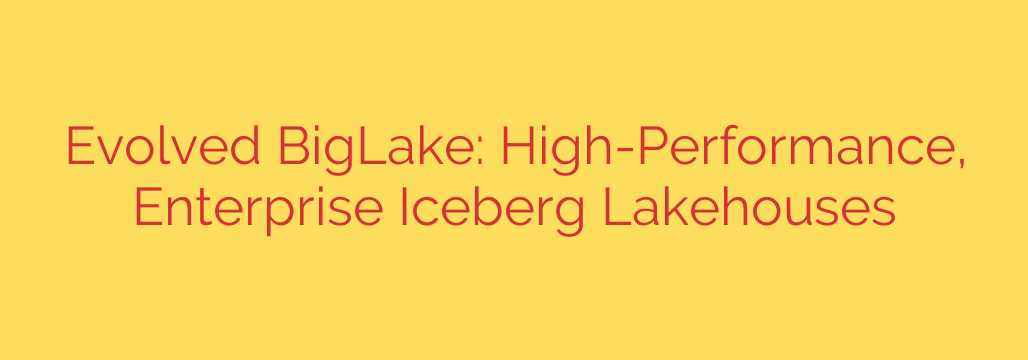
Accessing and analyzing vast amounts of data stored across different platforms and formats has traditionally been a complex challenge for organizations. Data often ends up in isolated silos, making it difficult to perform comprehensive analytics, ensure consistent governance, and maintain high performance. This fragmentation hinders innovation and slows down critical business insights.
To address these challenges, a new approach is needed that unifies data access and provides the capabilities of a data warehouse directly on data stored in data lakes. This is where the concept of a lakehouse architecture becomes powerful. A lakehouse combines the scalability and cost-effectiveness of data lakes with the structure, governance, and performance features typically found in data warehouses.
A significant development in building a high-performance, enterprise-grade lakehouse is the evolution of platforms like BigLake, which allows users to query data across clouds and formats using a single engine. By deeply integrating with open table formats, specifically Apache Iceberg, BigLake unlocks advanced capabilities for data stored in object storage.
Apache Iceberg is a high-performance open table format designed for massive analytical datasets. It offers several key advantages over traditional data lake approaches. Iceberg brings reliable table semantics, allowing for operations like schema evolution, hidden partitioning, partition evolution, time travel, and more, with strong consistency guarantees. This makes data in the lake more reliable and easier to manage, similar to tables in a database.
The integration of BigLake with Iceberg delivers a truly evolved lakehouse. This combination provides enterprises with:
- Enhanced Performance: By leveraging Iceberg’s capabilities, BigLake can execute queries on lake data with significantly improved speed. This is due to features like intelligent data skipping based on file statistics and optimized query planning. Accessing data becomes faster and more efficient, accelerating analytical workloads.
- Unified Governance and Security: BigLake extends its robust security and governance features to Iceberg tables. This means you can enforce consistent access controls, data masking policies, and auditing across all your data, regardless of whether it resides in a traditional data warehouse or an Iceberg table in cloud storage. Centralized policy management simplifies compliance and enhances data security.
- Simplified Data Management: Operations that were previously complex or risky on data lakes, such as schema changes or managing partitions, become straightforward and reliable with Iceberg. This reduces operational overhead and minimizes the risk of data corruption or query failures caused by metadata inconsistencies.
- Openness and Flexibility: Leveraging an open source format like Iceberg avoids vendor lock-in. Data stored in Iceberg format can be accessed and processed by various engines and tools that support the format, providing flexibility and interoperability. BigLake provides a high-performance path to access this open data.
- Enterprise Readiness: The combination offers the reliability, scalability, and governance features necessary for critical enterprise workloads. It supports complex queries, concurrent access, and large-scale processing, making it suitable for demanding analytical applications.
This evolved BigLake capability, powered by deep Iceberg integration, represents a significant step forward in building sophisticated lakehouse architectures. It provides the performance, governance, and flexibility enterprises need to break down data silos, simplify data management, and extract maximum value from their vast data reserves stored in cloud object storage. It enables organizations to perform advanced analytics directly on their data lakes with the confidence and capabilities previously only associated with data warehouses.
Source: https://cloud.google.com/blog/products/data-analytics/enhancing-biglake-for-iceberg-lakehouses/








